|
|
|
|
ISSUE 14 | NOV. 2020
|
|
|
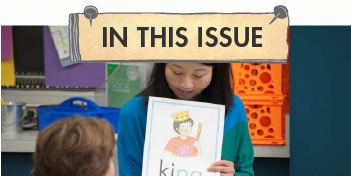
It is hard to believe it’s already November! At this point in the semester, you have become familiar with your students’ likes, dislikes, and personalities, but you may have also noticed more reading deficits than in prior years due to school closures and ongoing disruptions. In this issue, we will address resources provided in Superkids and share a few fun ideas and tips from teachers and classroom coaches to help you target your students’ instructional needs.
|
|
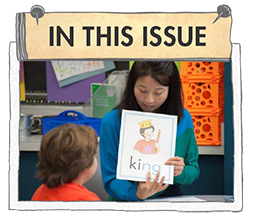
|
|
|
|
|
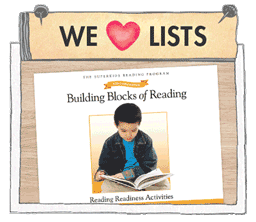 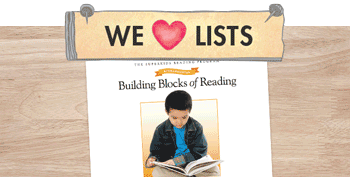
|
Resources for Reinforcing Reading Readiness Skills
|
| 1. |
Use the Building Blocks of Reading kindergarten resource or the Superkids Skill-Building Book in grades K–2 to find activities that will reinforce auditory discrimination, phonological awareness, phonemic awareness, print awareness, and letter recognition. |
|
Resources for Skill Reteaching and Reinforcement
|
2. |
Return to the Daily Routines with individual students or with a small group to guide reinforcement and practice with blending, decoding, and encoding skills. |
| |
| 3. |
The Superkids Skill-Building Book includes activities that will target the readiness skills mentioned above and additional essential skill strands including phonics, vocabulary, comprehension, and more.
|
| |
| 4. |
Ten-Minute Tuck-Ins are reinforcement activities that are tied to the daily lessons. These are found in the Teacher’s Guide at the end of each lesson.
|
| |
| 5. |
Interactive Whiteboard Activities are teacher-led, touch-screen activities used to reinforce skills. Found in the Teacher Portal, these activities are based on the printed Ten-Minute Tuck-Ins in the Teacher’s Guide.
|
|
| |
| 6. |
Practice Pages are reproducible pages tied to the skills taught during your lessons. Some pages will likely be done in class, but the pages that are not used with the whole group can be assigned to individual students to reinforce and practice skills taught during word work.
Coach tip: Practice Pages can be laminated and placed in an independent center with dry-erase markers for repeated practice.
|
Resources for Providing Additional Reading Practice in Connected Text
|
7. |
Return to stories in the Student Book or Decodable Reader to develop decoding, comprehension, vocabulary, and fluency skills with text that is aligned to core instruction.
|
|
 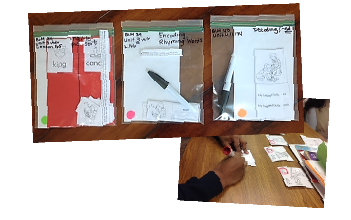
|
|
comprehension, vocabulary, and fluency skills with text that is aligned to core instruction. |
| |
| 8. |
Use the Library Books in kindergarten and first grade to provide additional reading practice. All library books are decodable and align with the phonetic elements taught in corresponding units.
|
|
| |
| 9. |
Use the Backpack Page Fluency Passages in first and second grade to provide additional practice with reading decodable text. These are short stories from the Reader and can be printed from the Superkids Teacher Portal.
Coach tip: For children who are easily overwhelmed by a lot of text on a single page, these passages can be cut with scissors into manageable chunks. Students can work on small chunks of text each day until the entire passage can be read.
|
Resources for Additional Blending and Decoding Practice
|
|
 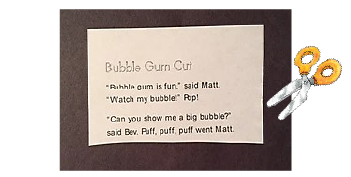
|
Resources for Additional Blending and Decoding Practice
|
| 10. |
The Big Book of Blending and Big Book of Decoding contain word lists that will provide additional practice with blending/decoding phonetically regular words. These pages are printable from the Superkids Teacher Portal and are perfect for small-group instruction.
|
|
|
|
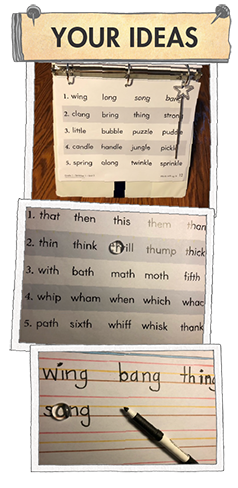 
|
Individual Practice Books
Using the printable Big Book of Decoding pages, this first-grade teacher created individual, mini books for her students to practice decoding at home while they learn remotely. She attached a small piece of ribbon to the bottom of a 3-ring binder so the book would stand up, and then she added pages printed from the Teacher Portal. So smart!
If teaching in person, these would be a great resource for individual blending or decoding practice at an independent center.

Add a Little Sparkle to Decoding Practice
When practicing decoding with small groups of students, this teacher uses clear, glass gems to highlight graphemes and identify sounds as students begin reading each new word on their printed Big Book of Decoding page. Once the letter-sounds have been identified, the students move the gem back to the beginning of the word and then slide it from left to right as they blend the sounds. Repeat until the word is read smoothly.

Providing Corrective Feedback
Looking for another use for those glass gems? In this classroom, as the students work through their dictation and spelling Daily Routine, their teacher walks around the room and monitors their work. If she sees a student has made an error, she simply places a gem on the letter that needs attention. What a great way to quietly provide corrective feedback!

|
|
|
|
|
|
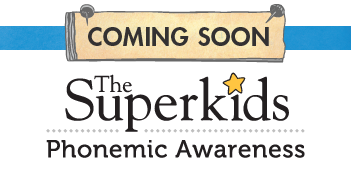 Daily Lessons + Intervention Daily Lessons + Intervention
|
|
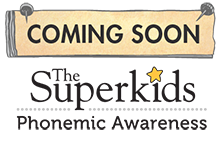
Daily Lessons + Intervention
|
|
If you missed our recent webinar, Targeting Instruction and Learning for Superkids Success, no problem! Learn more about teaching diagnostically and using resources within the Superkids program to target skill gaps in this recorded session.
Use the Superkids Points of Instruction Diagnostic Chart, as discussed in the webinar, to identify specific skill gaps that impact decoding and language comprehension.
|
|
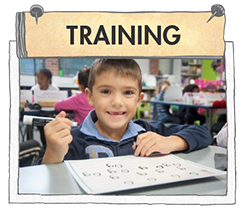
|
|
Contact us about professional development for your school or district if you need more support on this topic.
|
|

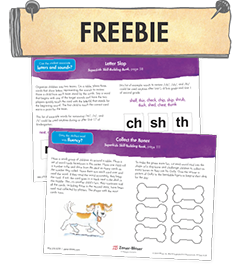
|
Here are two fun activities from the Superkids Skill-Building Book to support letter-sound association and fluency skills. These are ready to use in your classroom today!
|
|
|
|

|
|
|
|